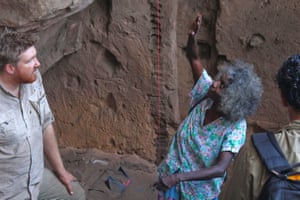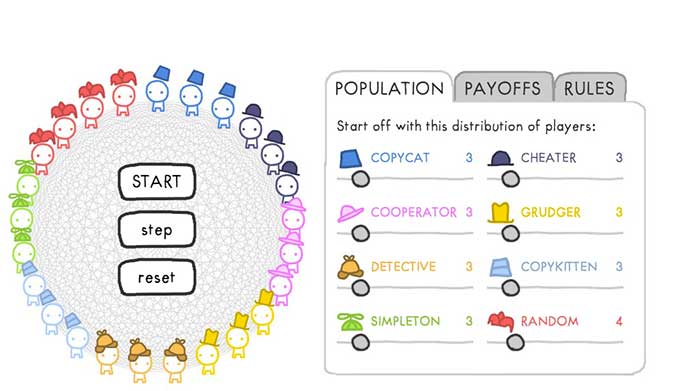via AbeBooks.co.uk by Jessica Doyle

Hemingway wrote, “If you are lucky enough to have lived in Paris as a young man, then wherever you go for the rest of your life, it stays with you, for Paris is a moveable feast.”
It’s a book lover’s dream to wander the very streets that inspired Marcel Proust, Émile Zola, Samuel Beckett, Albert Camus, Sartre, Simone de Beauvoir and so many others. You might step into the Salon at 27 rue de Fleurus where Gertrude Stein mentored Ernest Hemingway, or have a drink at the café littéraires Les Deux Magots and Café de Flore, the long-ago haunts of James Joyce, F. Scott Fitzgerald, Ezra Pound and their fellow The Lost Generation writers.
The love affair between Paris and writers has been a long and passionate one, whether authors are writing from Paris or about it. For centuries, the city has been host to an array of love stories, murder mysteries and dramas, from timeless tales like Victor Hugo’s The Hunchback of Notre Dame to ground-breaking modern literature like Henry Miller’s Tropic of Cancer.
The astounding effect of Paris on writers is demonstrated in the countless memoirs they have penned about their days, years and lives spent in the city. The effect is so strong it’s even inspired chefs and bakers to put down their whisks and pick up their pens, giving food memoirs a genre all of their own.
What is it about Paris that’s so attractive to the creatively-inclined? Perhaps the city’s own history is the most interesting story of them all. Take a literary tour with our selection of novels set in Paris, memoirs about life in Paris and Paris history books.
Continue reading
=============================
via Arts & Letters Daily: Lawrence Klepp in The Weekly Standard
Art credit: Jason Seiler
There are, broadly speaking, two kinds of futurology, the utopian and the apocalyptic. In Homo Deus, Yuval Noah Harari, like the Book of Revelation, offers a bit of both. And why not? The function of imaginary futures is to deliver us from banality. The present, like the past, may be a disappointing muddle, but the future had better be very good or very bad, or it won’t sell.
Harari, an Oxford-educated Israeli historian who teaches in Jerusalem, is the author of Sapiens (2015), a provocative, panoramic view of human evolution and history upward from apedom. It became an international bestseller, recommended by the likes of Mark Zuckerberg, Bill Gates, and Barack Obama. Harari’s style is breezy and accessible, sprinkled with allusions to pop culture and everyday life, but his perspective is coolly detached and almost Machiavellian in its unflinching realism about power, the role of elites, and the absence of justice in history. He is an unapologetic oracle of Darwin and data. And he is clearly a religious skeptic, but he practices a form of Buddhist meditation, and among the best things in his new book, like his previous one, are his observations on the varieties of religious experience.
Continue reading
=============================
via the News Statesman by Ben Myers
Author Adam Scovell’s tone is perfectly pitched between articulate academic and box-set binger.
In 1801, the proportion of the population of England and Wales living in towns and cities was just 17 per cent, but by the close of that century, as landowners were displaced and industry boomed, it had jumped to 72 per cent. The most recent UK census showed that 81.5 per cent of the population of England and Wales now live in urban areas, with less than 10 per cent residing in what would qualify as villages or hamlets.
This mass movement from agricultural to post-industrial life has detached us from the land that fed and clothed us for thousands of years, with the countryside becoming increasingly alien territory, avoided or misunderstood by those who have little contact with mud, dead animals, or the stench of excrement. Such urbanites have scant knowledge of farming or food production and patronise ancient local traditions. They are unnerved by the space, the silence. They fear their countryside, their own past.
Continue reading
=============================
via Big Think by Philip Perry
Whenever I go over my sister’s house, her beagle Taylor runs and jumps all over me. The dog then races around the room, barking and howling. If I sit on the couch she leaps onto my lap and licks my face (I’d better cover my groin, I’ve learned. One misstep can be painful). It doesn’t matter if my last visit was just yesterday or last year. This is how she is: a non-stop lovefest.
Continue reading
=============================
via Boing Boing by Rusty Blazenhoff

This 20-minute documentary is definitely worth a watch. It follows Burning Man’s fascinating history from its “humble countercultural roots on San Francisco’s Baker Beach” to “the world-famous desert convergence it is today”. If you’ve ever been to the big event in the Black Rock Desert, I guarantee it’ll give you a greater appreciation and understanding of it.
Continue reading
=============================
via Interesting Literature
The finest wine poems
‘Wine is bottled poetry.’ So said the Victorian poet and novelist Robert Louis Stevenson; and, indeed, over the centuries numerous poets have waxed lyrical about the juice of the vine.
Continue reading
=============================
via 3 Quarks Daily: Heidi Julavits in The New York Times

We were taking an airplane, I told our children, to see what I dramatically billed as ‘‘the end of the world’.
‘‘Can’t we go to a beach?’’ they asked. It was February. They were sick of the cold.
I promised them sand and plenty of water, but unless things went terribly wrong, we would probably not be swimming in it.
‘‘Where are we going?’’ they asked.
We were flying 2,000 miles to see more than 6,000 tons of black basalt rocks extending 1,500 feet into the Great Salt Lake in the shape of a counterclockwise vortex, designed by the most famous practitioner of ’70s land art, Robert Smithson.
‘‘It’s called the ‘Spiral Jetty,’ ’’ I told them.
Continue reading
=============================
via the Guardian by Helen Davidson at Madjedbebe and Calla Wahlquist
Artefacts in Kakadu national park have been dated between 65,000 and 80,000 years old, extending likely occupation of area by thousands of years

Madjedbebe site custodian May Nango and excavation leader Chris Clarkson in the pit. Photograph: Dominic O'Brien/Gundjeihmi Aboriginal Corporation
A groundbreaking archaeological discovery in Australia’s north has extended the known length of time Aboriginal people have inhabited the continent to at least 65,000 years.
The findings on about 11,000 artefacts from Kakadu national park, published on Thursday in the journal Nature, prove Indigenous people have been in Australia for far longer than the much-contested estimates of between 47,000 and 60,000 years, the researchers said. Some of the artefacts were potentially as old as 80,000 years.
Continue reading
=============================
via OUP Blog by Daniel May and Joäo Steiner

Hubble Space Telescope image of Messier 77 spiral galaxy by NASA, ESA & A. van der Hoeven. Public domain via Wikimedia Commons.
Contrary to common belief, black holes don’t swallow everything that comes nearby. In fact, they expel a good part of the gas of the centre of galaxies. This happens when a wind of ionized gas is formed in the vicinity of the black hole. In the case of supermassive black holes that occur at the centre of many galaxies, they produce a wind that can interact with the galaxy itself shaping its evolution through time. We may say that this wind could come in two “flavours”: in form of radiation emitted from a disc before falling onto the black hole or a jet of particles launched in opposite directions perpendicular to the same disc. We know, for instance, that they keep the intergalactic gas hot and prevent the galaxy from growing bigger, suppressing star formation in most of them.
Continue reading
=============================
via Boing Boing by Mark Frauenfelder

This simulation, called The Evolution of Trust starts with a variation of the prisoners' dilemma. You can choose to put a coin into a slot. Another person has the same choice on a different machine. You can't communicate with the other person. The only thing you know is this: if the other person put a coin in their slot, you will receive 3 coins. And if you put a coin in your slot, the other person will get 3 coins. What's the best strategy?
Continue reading
No comments:
Post a Comment